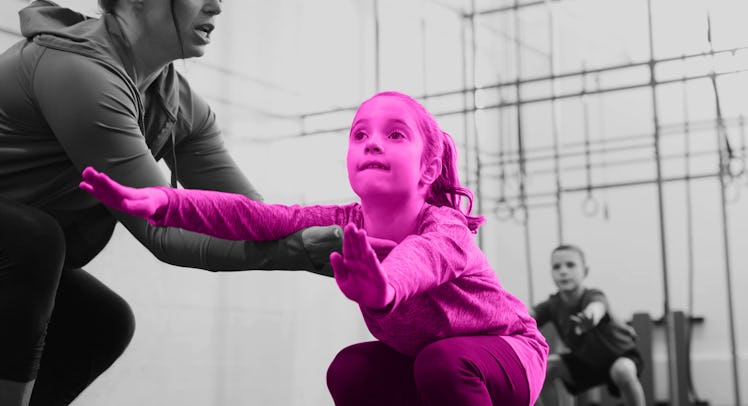How To Protect Young Girls From Sports Injuries
Parents love to watch daughters play sports, but they need to be aware of sports injuries typical of female athletes like ACL tears and concussions.

Parents of children playing sports experience a deep sense of gratification watching their kid tear it up on the field, court, or pitch. But they also suffer a distinct fear that kids might suffer a sports injury as the result of a slide tackle, errant ball, or hard cut. There are, unfortunately, no guarantees that this won’t happen; there are merely ways to mitigate risk. Some of these strategies differ substantively between girls and boys.
Girls have a particular issue with their knees when it comes to sports, explains Ali Flury, Program Manager with Safe Kids Worldwide. “Girls for whatever reason have a higher inclination of ACL tears,” she says. “They are eight times as likely as boys to tear their ACLs.”
There are hypotheses, but no definitive research, to explain the phenomenon. Some theories suggest that hormonal fluctuations in girls might affect tendons in females differently than males. Harvard Medical School points to a few biological differences that may contribute as well. Girls have higher estrogen levels, which contributes to less muscle mass; a wider pelvis, which alters the alignment of the knee and ankle and causes females to cut with one foot instead of two; and a greater likelihood of Vitamin D and Calcium deficiencies.
RELATED: Sports Injury Prevention for Kids’ Most Common Injuries
That said, it’s also possible that numbers are skewed because girls and their parents are more likely to seek treatment for ACL injuries, rather trying to walk it off.
Either way, Flury suggests that parents need to encourage girls to take precautions and strengthen the muscles that stabilize the knee. Even younger girls should incorporate body-weight squats into their training. “Watch the alignment when they’re doing it,” she says. “Stay straight and don’t lean over the knees.”
Interestingly, according to Safe Kids Worldwide research, girls receive more concussions in team sports common to both boys and girls. These include soccer and basketball. Again, the reasons for increased concussions in girls is unclear, but some suggest a link to weaker neck muscles in women and the fact they are often encouraged to play harder and more physically.
What’s more, recent research shows that concussion symptoms in girls may last up to twice as long. That puts a primacy on parents to be extra observant for signs of concussions in girls well after three weeks after a head injury. But it also points to a need to use the correct equipment.
ALSO: Teach Your Daughter to Be a Team Player
Treating sports and exercise seriously as parents is a key to protecting kids from injuries. Flury suggests taking kids in for a pre-participation evaluation with their pediatrician. “It’s basically a physical with their doctor,” she says. “That should help them find any issues that need to be taken care of or paid attention to.”
Though more common of 40-year-old men than 4-year-old girls, if a child has spent significant time lounging on the couch or otherwise generally inactive, rushing full bore into a sport can cause serious issues. Parents should keep an eye on practices to ensure that there is a ramp-up period.
Injuries are possible anytime sports or play is involved – and that’s not just organized sports. Flury says sometimes it’s easy to forget simply playing a game on the blacktop at research carries risks as well. While those risks are inherent, it also shouldn’t stand as a deterrent to allowing young kids to play.
“Kids being out there and playing is great. In our society, we’ve seen a decrease in the number of kids playing sports,” she says. “We’d love to see them out and playing.”
This article was originally published on